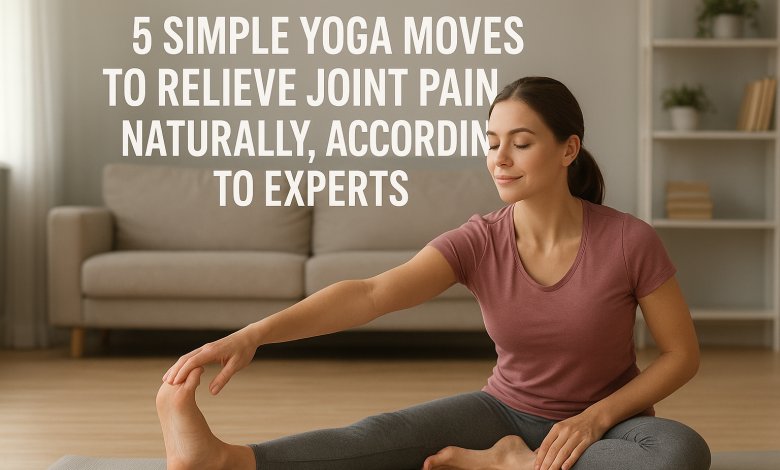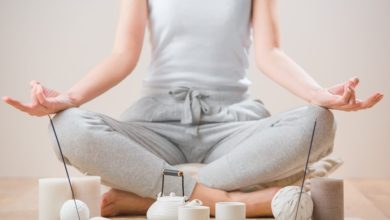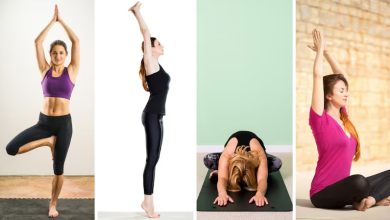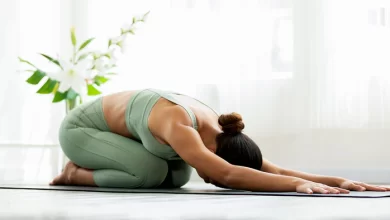5 Simple Yoga Moves to Relieve Joint Pain Naturally, According to Experts

The Silent Cry of Your Joints
If you’ve ever woken up to stiff knees, aching shoulders, or sore hips, you’re not alone. Joint pain affects millions of people every day — from those recovering after an intense workout to others simply trying to move through daily life without discomfort. It doesn’t just hurt physically — it can drain your energy, limit your freedom, and even affect your mood.
But here’s the beautiful truth: healing can begin with your own body. According to experts, simple yoga poses — when practiced mindfully — can ease inflammation, lubricate stiff joints, and restore flexibility. You don’t need to twist into complex shapes or spend hours at the gym. Just a few minutes of the right yoga stretches can help you reconnect with your body, reduce pain, and move with renewed confidence.
The 5 simple yoga moves to relieve joint pain naturally — backed by science, loved by experts, and perfect for everyone.
1. Cat-Cow Pose (Marjaryasana–Bitilasana): Unlock the Spine and Relieve Stiffness
Why It Works
The Cat-Cow pose is one of yoga’s simplest yet most powerful movements. It gently stretches the spine, shoulders, and neck — stimulating blood flow to your joints while easing stiffness in the back and hips. Experts say this rhythmic motion also helps in releasing tension and improving posture, which can reduce long-term strain on your joints.
How to Do It
- Start on all fours — wrists under shoulders, knees under hips.
- Inhale deeply, arch your back, and lift your chest (Cow Pose).
- Exhale slowly, round your spine, and tuck your chin to your chest (Cat Pose).
- Continue this flow for 10–12 rounds, syncing your breath with your movement.
Expert Tip
Dr. Priya Mehta, a yoga therapist and physiotherapist, says:
“Cat-Cow is a healing motion for your entire spine. It massages your joints internally while promoting spinal fluid movement — nature’s built-in joint lubricant.”
Emotional Insight
As you flow through Cat-Cow, imagine your spine melting away stiffness and stress — like your body exhaling years of tension with each breath.
2. Child’s Pose (Balasana): The Comfort Posture of Healing
Why It Works
Child’s Pose is known as yoga’s resting posture — but it’s also a gentle stretch for your knees, hips, and ankles. It relieves lower back pressure and gives your joints a chance to decompress. The calming nature of this pose helps reduce stress — one of the biggest hidden triggers of inflammation.
How to Do It
- Kneel on your mat with big toes touching and knees apart.
- Sit back on your heels and stretch your arms forward.
- Rest your forehead on the mat and breathe deeply for 1–2 minutes.
Expert Tip
“Never underestimate stillness,” says holistic yoga coach Ananya Rao. “Child’s Pose promotes both physical and emotional release. Your joints recover faster when your mind is calm.”
Emotional Insight
In Child’s Pose, you surrender. You allow your body to heal without force. It’s a reminder that stillness is sometimes the strongest medicine.
3. Bridge Pose (Setu Bandhasana): Strengthen and Support the Knees and Hips
Why It Works
Joint pain often worsens when surrounding muscles weaken. Bridge Pose strengthens the glutes, hamstrings, and lower back — the key muscles that stabilize your hips and knees. It also opens the chest and improves circulation, which helps deliver oxygen and nutrients to your joints.
How to Do It
- Lie on your back with knees bent, feet hip-width apart.
- Press your feet into the ground and lift your hips upward.
- Hold for 15–30 seconds while breathing deeply.
- Slowly lower down and repeat 3–5 times.
Expert Tip
According to Dr. Rajiv Nanda, orthopedic yoga specialist, “Bridge Pose builds joint stability by engaging the muscles that protect your knees and lower spine.”
Emotional Insight
Feel the power of your body lifting itself. Every rise in Bridge Pose reminds you that strength is built gently — one breath, one movement at a time.
4. Warrior II (Virabhadrasana II): Stability, Strength, and Balance
Why It Works
Warrior II stretches the shoulders, hips, and legs while strengthening the joints that support them. It increases endurance and balance — two essential elements for preventing joint pain. The deep stretch in your thighs and calves promotes circulation and reduces stiffness.
How to Do It
- Stand with legs wide apart.
- Turn your right foot out 90 degrees and bend your right knee.
- Stretch your arms parallel to the floor, gaze over your right hand.
- Hold for 30 seconds, then switch sides.
Expert Tip
“Warrior II builds body awareness,” says yoga instructor Rina D’Souza. “When you strengthen your stabilizing muscles, you reduce the pressure on your joints — a natural way to prevent pain.”
Emotional Insight
This pose embodies strength. When you stand like a warrior, you remind yourself that pain doesn’t define you — resilience does.
5. Legs-Up-the-Wall (Viparita Karani): The Pose of Pure Relief
Why It Works
This gentle inversion relaxes the entire body while relieving pressure from swollen or aching joints. It boosts lymphatic drainage, reduces inflammation, and allows blood to flow freely through the lower body — cleansing your system naturally.
How to Do It
- Sit close to a wall and lie back while swinging your legs up.
- Keep your legs straight and your arms relaxed at your sides.
- Close your eyes and breathe slowly for 5–10 minutes.
Expert Tip
“This pose reverses gravity’s pull on your joints,” says restorative yoga specialist Kavita Jain. “It reduces swelling and promotes recovery at a cellular level.”
Emotional Insight
As you rest in this pose, imagine your body releasing pain — your joints floating freely, light as air. Healing begins when you let go.
The Science Behind Yoga and Joint Healing
Modern research backs what yogis have known for centuries: movement heals. Studies show that gentle yoga postures improve flexibility, strengthen supportive muscles, and reduce inflammation markers in people with arthritis and chronic joint pain.
- Yoga increases synovial fluid production, which lubricates joints.
- It reduces cortisol, a stress hormone that triggers inflammation.
- Deep breathing enhances oxygen flow, promoting tissue repair.
Experts emphasize that consistent, mindful yoga — even 10 minutes daily — can transform how your joints feel and move.
Lifestyle Tips to Boost Your Yoga Practice
Pair these yoga moves with simple lifestyle habits for long-term relief:
- Stay hydrated – Water keeps your joints lubricated.
- Eat anti-inflammatory foods – Think turmeric, ginger, berries, and omega-3s.
- Get regular sunlight – Vitamin D supports bone health.
- Sleep well – Rest repairs joint tissues.
- Listen to your body – Avoid pushing through pain; gentle consistency wins.
Remember: healing is not a race — it’s a rhythm.
Emotional Connection: From Pain to Peace
Joint pain often makes you feel disconnected from your body. But yoga teaches you to reconnect — to breathe through discomfort and rebuild trust with your own strength. Each pose becomes a conversation with your body, saying, “I hear you. I’m here to help.”
Yoga is not just about movement; it’s about mindfulness, compassion, and self-love. With every stretch, you invite light into the dark corners of pain and remind yourself that healing is always possible.
Conclusion: Your Path to Natural Joint Relief
The beauty of yoga lies in its simplicity — it asks for nothing but your time and attention. No pills, no machines, no complicated programs. Just you, your breath, and your body working in harmony.
By practicing these 5 simple yoga moves to relieve joint pain naturally, you’re not just easing discomfort — you’re creating a daily ritual of self-healing.
Every breath, every stretch, every gentle move brings you closer to freedom, flexibility, and peace.
So roll out your mat, take a deep breath, and begin. Because your body deserves to move — pain-free, graceful, and strong — every single day. 🧘♀️💫




